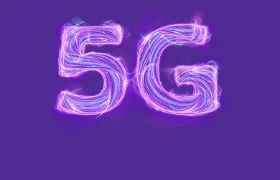Proximus to switch off its 3G network by the end of 2024
Proximus has decided to stop providing services on its 3G network by the end of 2024, and to fully invest in newer generations of mobile network technology that are more powerful and energy efficient. Given the continuous decline in 3G traffic, the need for capacity to offer 3G services is becoming smaller and smaller. Proximus will use the freed up spectrum and infrastructure to further consolidate its 4G and 5G networks, while committing to ensure full 3G coverage until the end of 2024.
Driven by its ambition to provide the best network and offer its customers an unsurpassed mobile experience, Proximus has chosen to fully leverage latest-generation technologies. The wide range of spectrum acquired in the recent spectrum auction is an essential element in this regard, which will allow to further consolidate 4G service delivery and guarantee a smooth 5G roll-out.
To ensure efficient use of mobile spectrum, Proximus will be reassigning the spectrum for 3G services (which are less and less used) to 4G and 5G from 2025. Focusing on the latest technologies is a logical move made by many other operators around the world to make their networks future-proof. When it comes to performance, security and energy consumption, mobile networks of more recent generations are significantly more efficient. Especially in the current context, where energy saving has never been more crucial, this is a decisive factor to choose for an uncompromising and accelerated transition to newer technologies.
Proximus will keep providing full 3G services throughout this transition, and expects to switch off its 3G network by the end of 2024. In the run-up to this discontinuation as well as beyond that point, the company commits to collect and recycle as many remaining 3G devices as possible.
What specific changes can be expected?
Since the vast majority of devices on the Proximus network already support at least 4G today, the decision has no impact for most residential customers. Their data services will continue to run over 4G (or 5G for customers using compatible devices), as they already do today.
The ever-smaller minority of customers with older-generation devices can also put their mind at ease. Calling and texting will remain possible in any case, as these services can smoothly be delivered over the 2G network with no impact to the user. Proximus is committed to keep providing its services over the 2G network at least until the end of 2027.
In terms of data traffic, there is hardly any impact for residential customers anyway: the amount of data sent over the Proximus network via 3G today represents less than 2% of total data traffic, only a fraction of which originates from devices belonging to residential customers. Moreover, the vast majority of that traffic is generated by devices that also support 4G, and can therefore seamlessly switch to 4G. These figures are expected to continue to evolve in the same direction by the end of 2024.
Enterprise customers, who often use the 3G network for data applications and IoT solutions, will be personally informed of the changes in the coming months. That way, remaining devices that operate only on 3G technology can be replaced in good time.

The planned discontinuation of 3G services is a logical step in our efforts to best prepare our mobile network for the future. In the recent spectrum auction, we were successful in acquiring a very wide range of spectrum, which will allow us to continue providing unmatched mobile experience in the decades to come. In that context, we choose to focus on the latest network technologies, and to use the released spectrum optimally for the further development of a powerful, future-proof, ultra-secure and energy-efficient mobile network.
- Key information and regular updates on the 3G network switch-off can also be found on this page.


